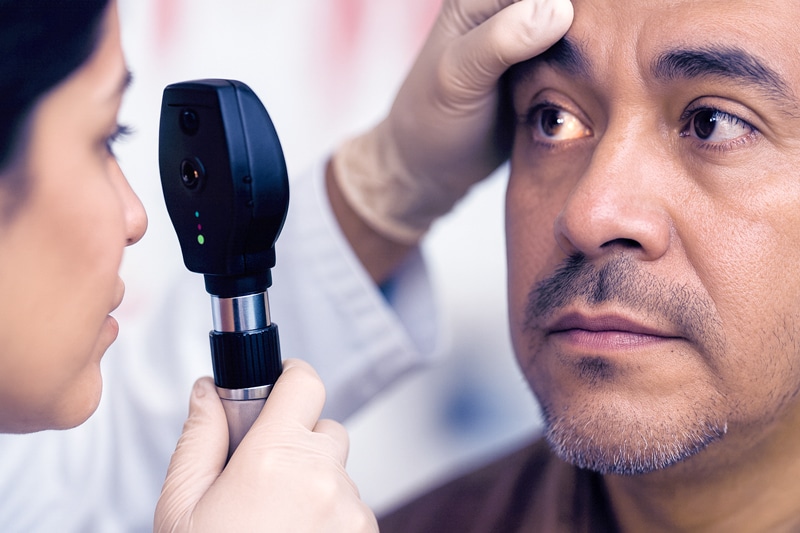
Tube Shunt Surgery
One of the most effective long-term solutions for severe or complex glaucoma is tube shunt surgery—also known as a glaucoma drainage implant or aqueous shunt implantation.
What Is a Tube Shunt?
A tube shunt is a small medical device surgically implanted in the eye to create a new drainage pathway for aqueous humor—the fluid that maintains the eye’s internal pressure. In healthy eyes, this fluid drains through the trabecular meshwork and other natural channels. In glaucoma, those pathways become blocked or inefficient, causing pressure to rise and damage the optic nerve.
The tube shunt (also called a glaucoma drainage device or aqueous shunt) consists of two parts:
- A tiny flexible tube, placed inside the eye to drain fluid.
- A small plate or reservoir, attached to the outside of the eye (under the conjunctiva), where the fluid collects and is slowly absorbed.
Common models include the Ahmed, Baerveldt, and Molteno shunts, each designed with unique features to regulate flow and minimize complications.
How the Surgery Works
Tube shunt surgery is usually performed under local anesthesia with sedation and takes about 45–60 minutes per eye.
- Anesthetic and preparation: Numbing drops and a mild sedative keep you comfortable.
- Implant placement: The surgeon inserts a thin silicone tube into the front or back chamber of the eye.
- Attachment of reservoir: The other end of the tube connects to a small plate placed under the white part of the eye (sclera).
- Controlled drainage: The plate acts as a reservoir, allowing fluid to collect and absorb gradually through surrounding tissue.
- Protective closure: A small graft covers the tube, and the incision is closed with dissolvable sutures.
Patients go home the same day and return for follow-up visits to monitor pressure and healing.

Why Tube Shunt Surgery May Be Recommended
Tube shunts are generally chosen when other procedures—such as Selective Laser Trabeculoplasty (SLT), or MIGS are not sufficient or have failed to keep pressure within the safe range. Tube shunts are typically reserved for patients who:
- Have moderate to advanced glaucoma not adequately controlled by medications or laser treatments.
- Have failed previous surgeries, such as trabeculectomy.
- Have certain eye conditions (like uveitic glaucoma, neovascular glaucoma, or congenital glaucoma) that make other surgeries less successful.
- Have significant scarring or previous eye trauma that blocks fluid outflow.
By providing an alternate drainage route, the implant helps lower intraocular pressure and reduce the risk of further optic nerve damage.
Types of Tube Shunts
Ahmed Valve
- Features a pressure-sensitive valve that automatically controls fluid flow, reducing the risk of postoperative hypotony (pressure too low).
- Often used when immediate pressure control is needed.
Baerveldt Implant
- Non-valved design that provides long-term pressure reduction.
- May require a temporary ligature to prevent early over-drainage during the healing process.
Molteno Implant
One of the earliest shunt designs; available in single- or double-plate options for advanced cases.
Paul Glaucoma Implant (PGI)
A newer, smaller device designed to maintain consistent pressure control with minimal tissue disruption.
Benefits of Tube Shunt Surgery
Eye Pressure
Diverse
Decreased Drops
Effective

What to Expect After Surgery
After tube shunt surgery, your eye will be patched overnight, and you’ll begin using anti-inflammatory and antibiotic eye drops to prevent infection and control inflammation. Most patients experience mild discomfort, redness, or blurry vision for the first few days.
Follow-up schedule generally includes visits:
- The next day
- One week later
- Several follow-ups over the next few months
Your doctor will monitor your intraocular pressure, healing of the conjunctiva, and function of the drainage device. Vision typically stabilizes within a few weeks, though complete healing can take up to three months.

Risks and Possible Complications
Like all surgical procedures, tube shunt implantation carries risks, including:
- Infection or inflammation
- Over- or under-drainage leading to pressure fluctuations
- Corneal damage near the tube’s entry point
- Double vision or discomfort from the plate
- Tube exposure or blockage over time
At Barnet Dulaney Perkins, our glaucoma surgeons use meticulous surgical techniques and advanced implant materials to minimize these risks and ensure optimal healing.
Success Rates and Long-Term Outlook
Clinical studies report that tube shunt surgeries maintain target eye pressure in 70–80% of patients over five years or more. While implants do not cure glaucoma, they are highly effective in preserving remaining vision by slowing or halting optic nerve damage.
With careful follow-up and ongoing care, most patients experience stable, long-term outcomes and improved quality of life.
When to Consider a Tube Shunt
You may be a candidate for tube shunt surgery if:
-
Eye pressure remains high despite maximum tolerated medical therapy.
-
Previous surgeries have failed to maintain control.
-
You have secondary or complex glaucoma.
-
Your eye anatomy or scarring limits success with other procedures.
Your Barnet Dulaney Perkins glaucoma specialist will perform a full evaluation—including optic nerve imaging, visual field testing, and pressure analysis—to determine whether a tube shunt is the best option.
Frequently Asked Questions About Tube Shunts
Is a tube shunt permanent?
Yes. The device is designed to stay in the eye permanently and continue regulating fluid flow throughout your lifetime.
How long does a tube shunt last?
Many implants function effectively for 10 years or longer, with proper follow-up and maintenance.
Will I still need glaucoma drops after surgery?
Some patients can stop using drops, while others may still need one or two to maintain ideal pressure levels.
Can the tube be removed or replaced?
In rare cases where the tube becomes blocked, exposed, or non-functional, your surgeon can revise or replace it.
What are the signs the tube is working?
Your doctor will monitor your intraocular pressure at follow-up appointments. Stable or reduced pressure means the shunt is functioning correctly.
